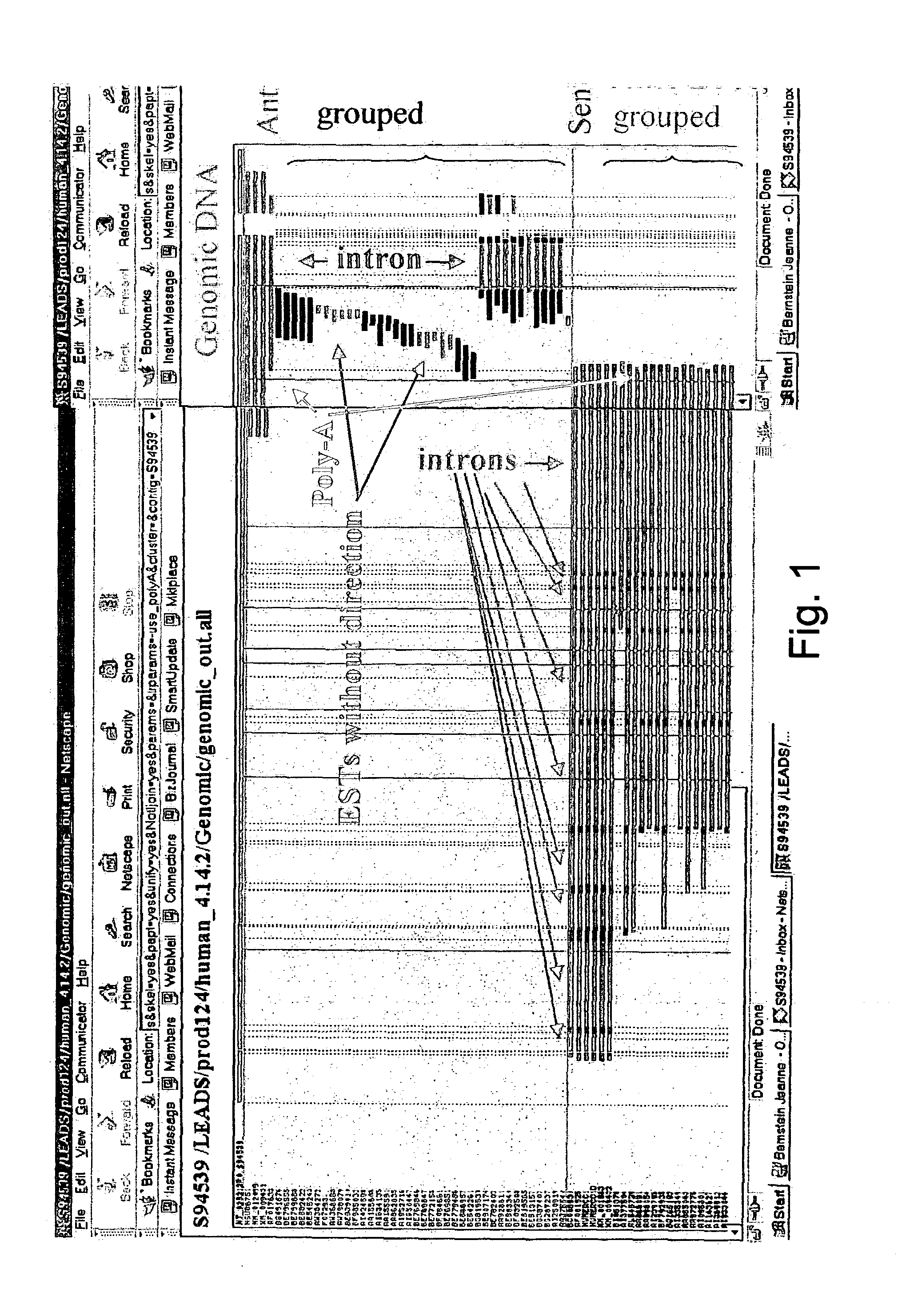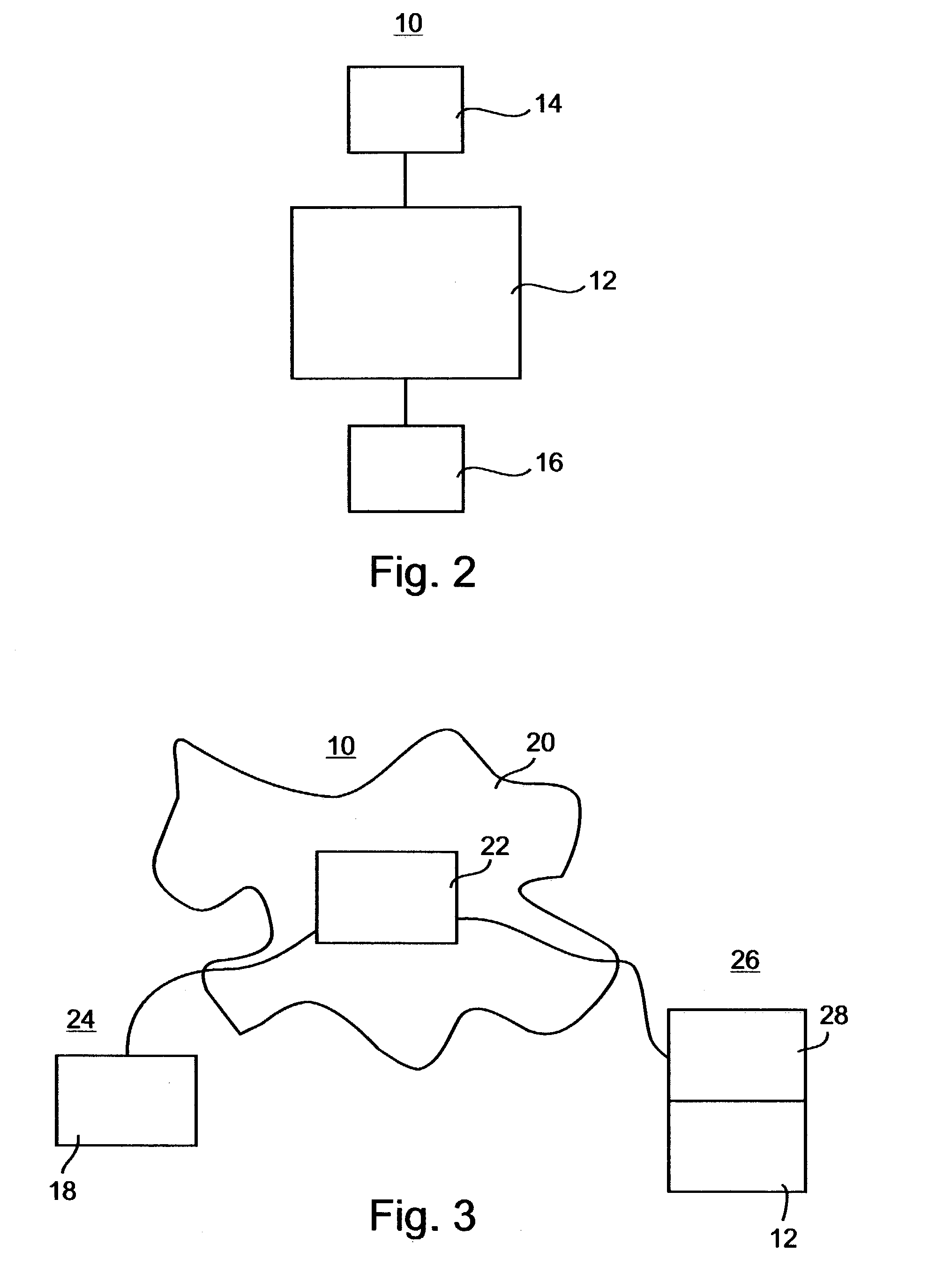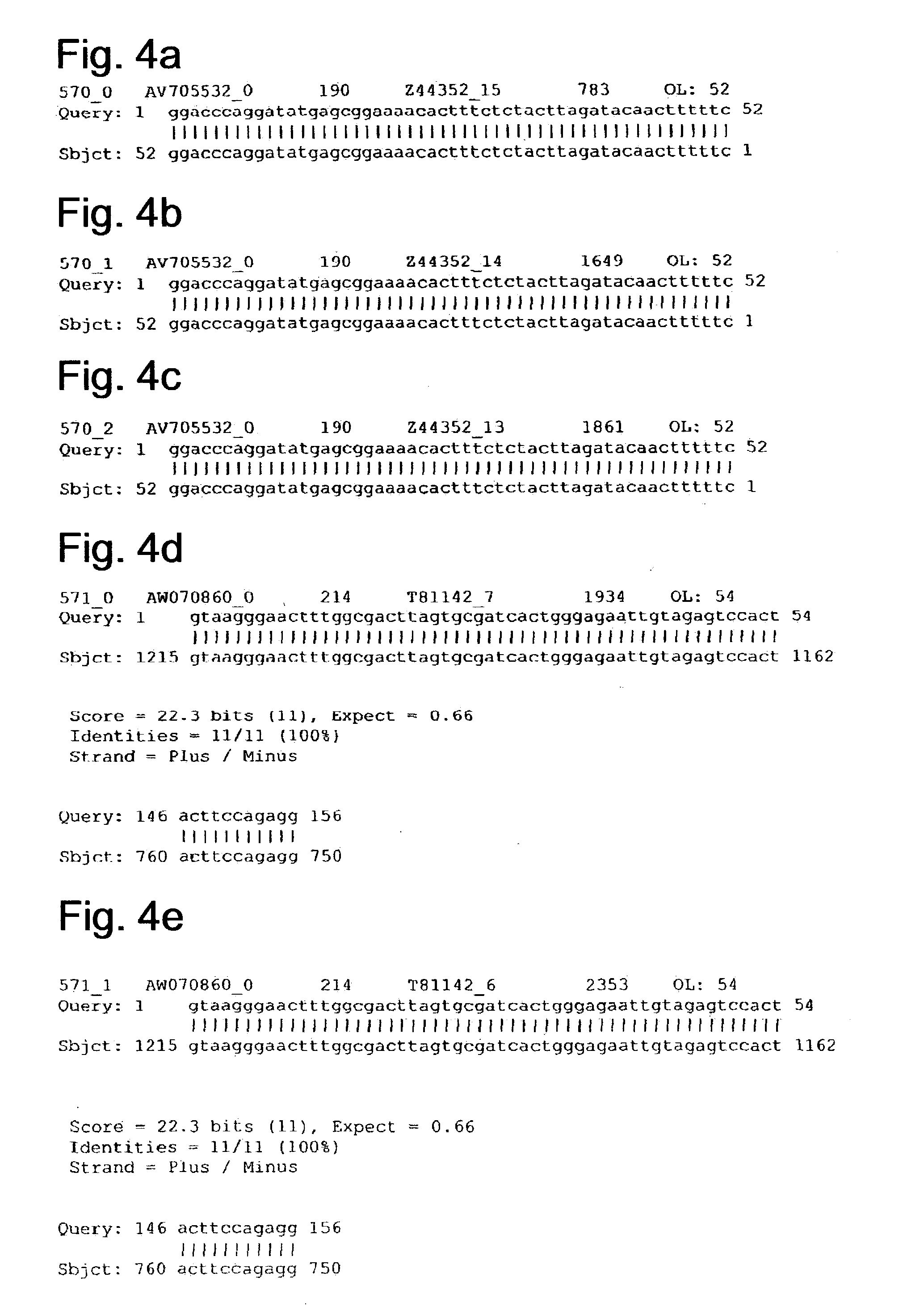Methods and systems for identifying naturally occurring antisense transcripts and methods, kits and arrays utilizing same
a technology of antisense and kits, applied in the field of methods and systems for identifying naturally occurring antisense transcripts and methods, kits and arrays utilizing same, can solve the problems of antisense data discovery, reduced elongation of transcription, and delayed termination
- Summary
- Abstract
- Description
- Claims
- Application Information
AI Technical Summary
Problems solved by technology
Method used
Image
Examples
example 1
Identification of 53BP1 and 76P RNA Transcripts in a Variety of Human Tissues and Cell-Lines
[0269] Background:
[0270] The tumor suppressor p53 binding protein 1 (SEQ ID NO: 15) is one of the various p53 target proteins. It binds to the DNA-binding domain of p53 and enhances p53-mediated transcriptional activation. 53BP1 is characterized by several structural motifs shared by several proteins involved in DNA repair and / or DNA damage-signaling pathways. 53BP1 becomes hyperphosphorylated and forms discrete nuclear foci in response to DNA damage induced by radiation and chemotherapy. Recent reports suggest that 53BP1 is an ataxia telangiectasia mutated (ATM) substrate that is involved early in the DNA damage-signaling pathways in mammalian cells, attributing a role to 53BP 1 in the development of various mammalian pathologies.
[0271] Results:
[0272] Two 53BP1 RNA sense transcripts with dissimilar 3' UTRs were previously described [Iwabuchi K. et al. (1994) Proc. Natl. Acad. Sci. USA] and a...
example 2
[0278] Identification of mRNA and Complementary Transcripts of the Cell Death Inducing DFF45-Like Effector (CIDE)-B
[0279] Background:
[0280] Cell death inducing DFF45-like effector (CIDE-B) (GenBank Accession numbers AF190901 and AF218586) is a member of a novel family of apoptosis-inducing factors that share homology with the N-terminal region of DFF, the DNA fragmentation factor. Although the molecular mechanism of CIDE-B induced apoptosis in unclear, mitochondrial localization and dimerization, both where shown to be required [Chen Z. et al. (2000) J. Biol. Chem. 275:22619-22622]. Notably, over-expression of CIDE-B in mammalian cells shows strong cell death-inducing activity, suggesting that aberrant expression of this protein may be associated with a number of mammalian pathologies [Inohara N. et al. (1998) EMBO J. 17:2526-2533].
[0281] Results:
[0282] Two sense transcript of the CIDE-B gene were previously described with different 5' UTRs [Inohara N. et al. (1998) EMBO J. 17:2526-...
example 3
Identification of mRNA and Complementary Transcripts of the Apoptosis Inducing Factor APAF-1
[0287] Background:
[0288] A conserved series of events including cellular shrinkage, nuclear condensation, externalization of plasma membrane phosphatidyl serine, and oligonucleosomal DNA fragmentation characterizes apoptotic cell death. Regardless of the circumstance, induction and execution of apoptotic events require activation of caspases, a family of aspartate-specific cysteine proteinases. Caspase activation may be regulated by the mitochondrion and specifically by the apoptosome consisting of an oligomeric complex of apoptotic protease-activating factor-1 (APAF-1), cytochrome C and dATP. The apoptosome recruits and activates caspase-9, which in turn activates the executioner caspases, caspase-3 and -7. The active executioners kill the cell by proteolysis of key cellular substrates [Zou H. et al. (1999) J. Biol. Chem. 274:11549-11556]. Evasion or inactivation of the mitochondrial apoptos...
PUM
| Property | Measurement | Unit |
|---|---|---|
| Fraction | aaaaa | aaaaa |
| Length | aaaaa | aaaaa |
| Ratio | aaaaa | aaaaa |
Abstract
Description
Claims
Application Information
 Login to View More
Login to View More - R&D
- Intellectual Property
- Life Sciences
- Materials
- Tech Scout
- Unparalleled Data Quality
- Higher Quality Content
- 60% Fewer Hallucinations
Browse by: Latest US Patents, China's latest patents, Technical Efficacy Thesaurus, Application Domain, Technology Topic, Popular Technical Reports.
© 2025 PatSnap. All rights reserved.Legal|Privacy policy|Modern Slavery Act Transparency Statement|Sitemap|About US| Contact US: help@patsnap.com



